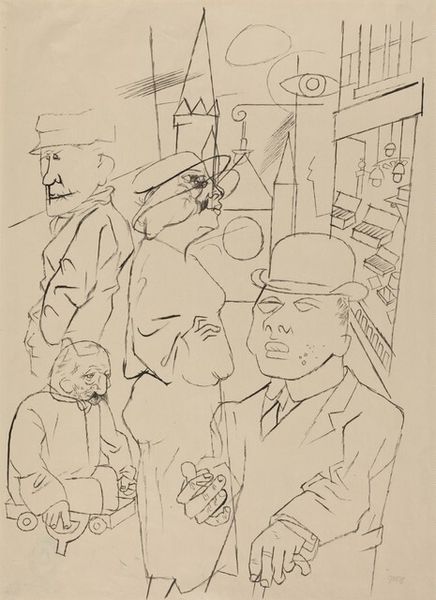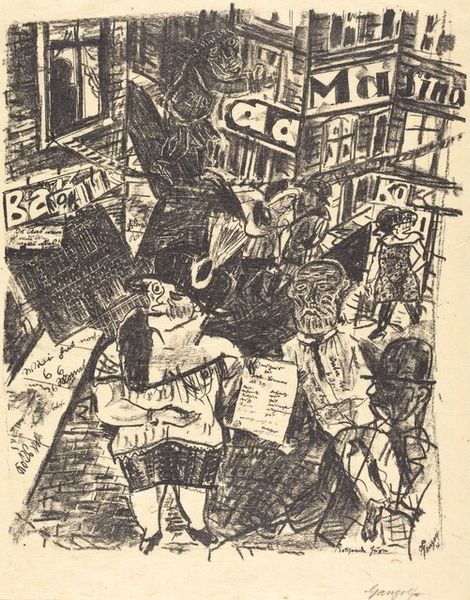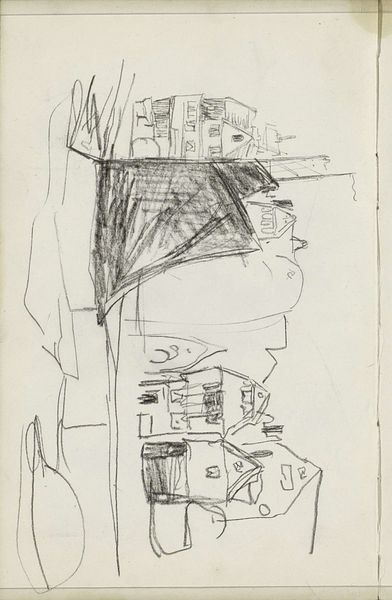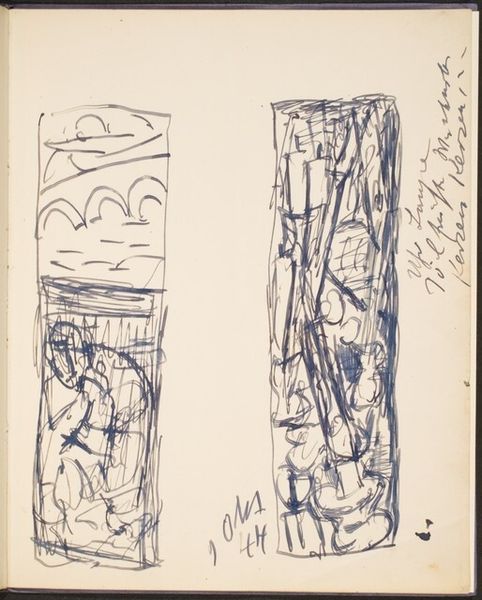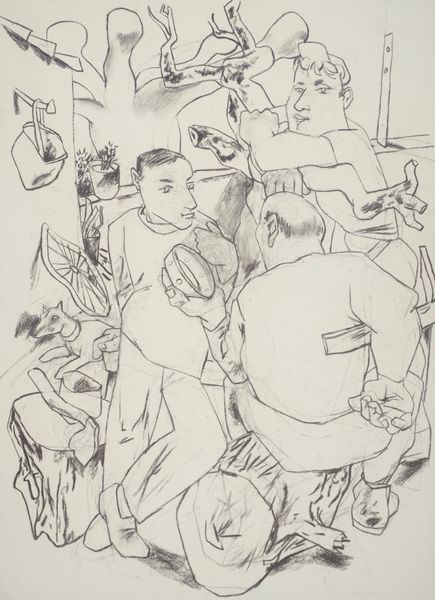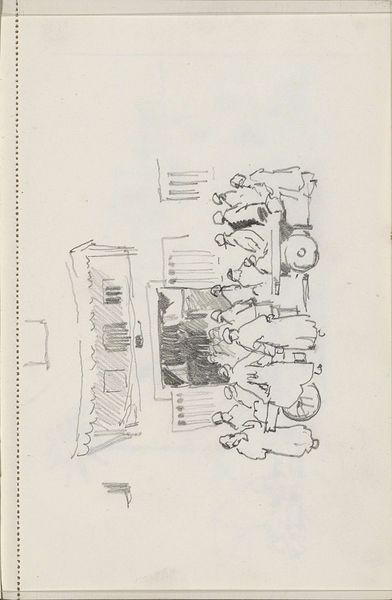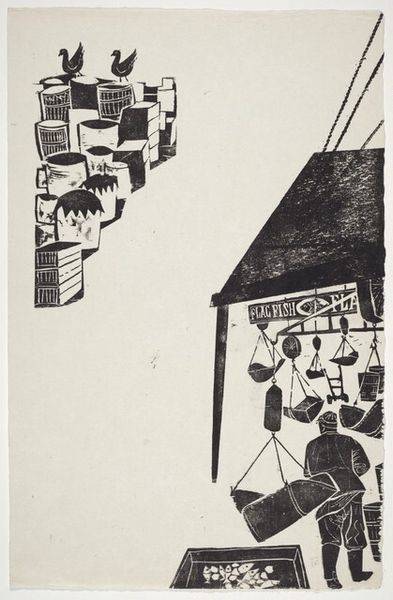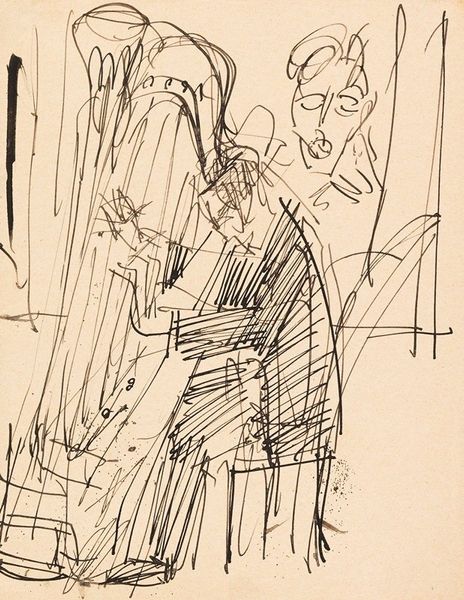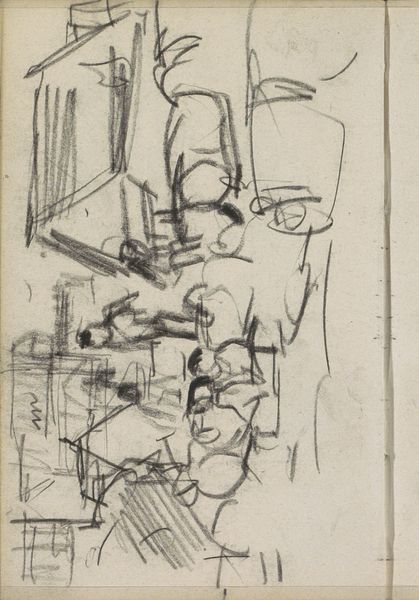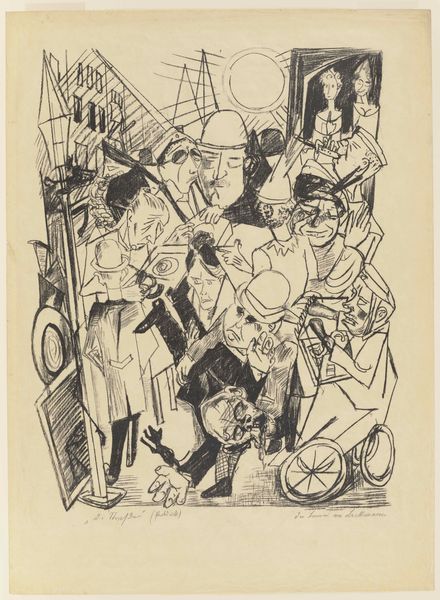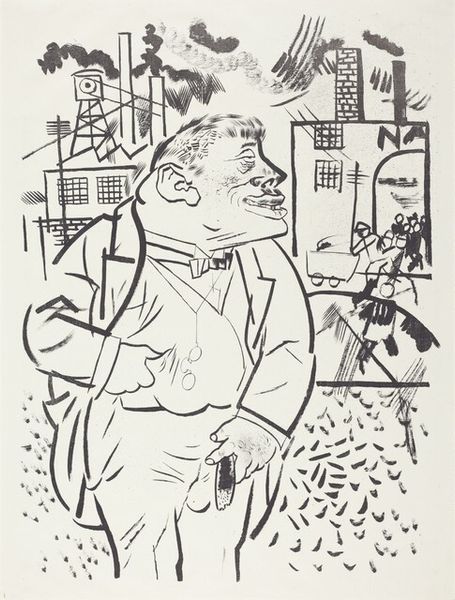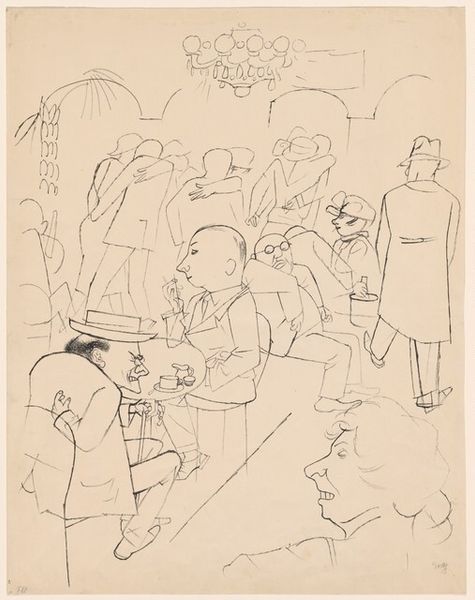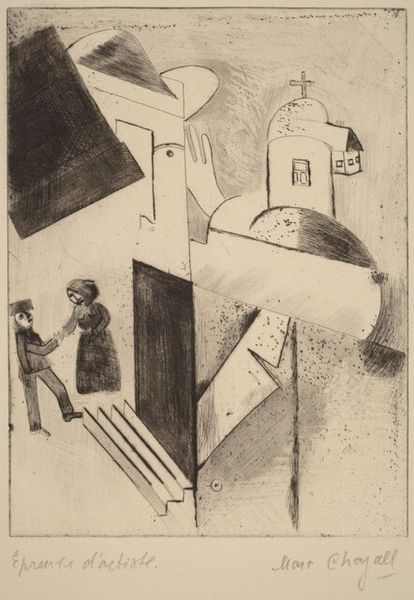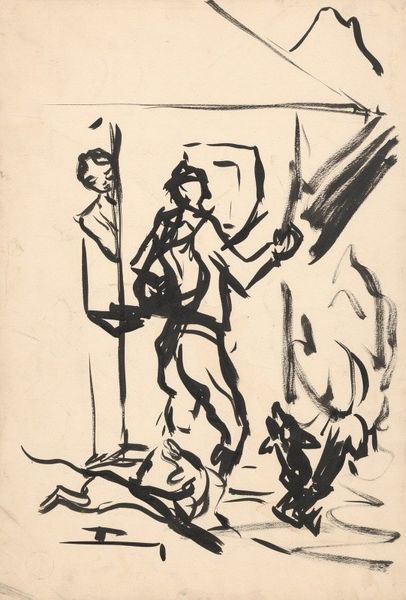
drawing, print, pen
#
drawing
#
comic strip sketch
#
imaginative character sketch
#
new-objectivity
# print
#
caricature
#
cartoon sketch
#
figuration
#
personal sketchbook
#
idea generation sketch
#
sketchwork
#
ink drawing experimentation
#
pen-ink sketch
#
expressionism
#
sketchbook drawing
#
pen
#
storyboard and sketchbook work
Dimensions: image: 46.2 × 34.29 cm (18 3/16 × 13 1/2 in.)
Copyright: National Gallery of Art: CC0 1.0
Editor: So, this is George Grosz's "The Convict," made in 1919 using pen and ink. There's a striking contrast; a detailed figure stands rigid while a chaotic swirl of figures and architecture bursts behind him. How do you interpret this piece? Curator: Grosz offers us a glimpse into the psychological weight of imprisonment, or perhaps a society’s self-imprisonment. Notice the convict's oversized head, almost childlike in its baldness, juxtaposed against the fragmented background. What memories or societal constructs do you think are contained within the angular architecture behind him? Editor: It’s almost as if his internal world, filled with fragmented memories of life outside, is pressing in on him, and the geometric shapes feel cold and oppressive. But why that contrast in style between the man and the environment? Curator: The rigid, almost simplified, form of the convict perhaps symbolizes a stripping away of individuality by the system, while the frenetic background embodies a world consumed by corruption and social decay. The expressionist style emphasizes the emotional and psychological state rather than objective reality. Consider the sharp lines; don't they evoke a sense of anxiety and instability prevalent in post-World War I Germany? Editor: Absolutely. I hadn't thought about the deliberate flattening of the figure as symbolic erasure. It feels like Grosz is commenting on the dehumanizing aspects of societal structures. Curator: Precisely! The stark contrast highlights how the individual is often crushed by societal forces, the emotional and cultural memory. A potent reminder, don’t you agree? Editor: Yes, definitely. Seeing how he uses this contrast between the individual and society adds a lot of depth to the piece and really puts its cultural critique front and center.
Comments
No comments
Be the first to comment and join the conversation on the ultimate creative platform.
